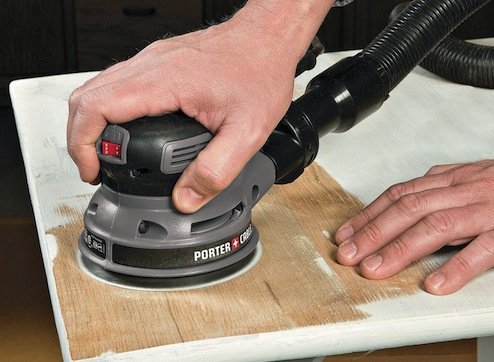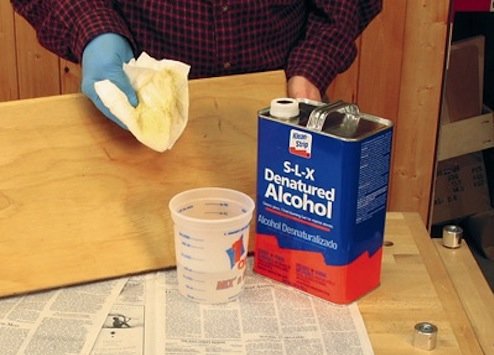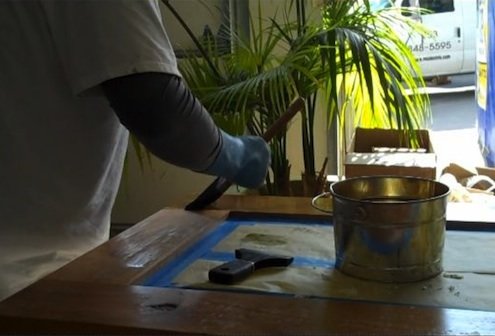

We may earn revenue from the products available on this page and participate in affiliate programs. Learn More ›
Varnish, lacquer, shellac and other clear coats are applied to protect wood furniture and flooring from scratches, scuff marks, and stains. Applied properly, these products do their job well—but what if you want to re-expose the wood grain for refinishing, repair, or restoration?
Then your first order of business will be removing the wood’s existing finish. There are many different clear-coat finishes, and if you don’t know the origins of your piece, it can be extremely difficult to distinguish between finish types.
Basically, there are three ways to de-varnish wood when you aren’t sure what type of finish you’re dealing with.
Your Options
- Sanding
- Solvents
- Chemical strippers
Read on for full details on each of these three approaches below….
Remove varnish by sanding
Good for paint, acrylic, varnish, lacquer, shellac
Though labor-intensive, sandpaper is capable of removing nearly any wood finish. It can be used to refinish hardwood floors, or it can be used to remove varnish from much smaller surfaces—a tabletop, for example. Tackle flat surfaces with a power tool like the random orbit sander; for irregular areas, use handheld paper or a sanding block. If you’re removing the finish from a piece of furniture that you plan to paint, sanding is the only necessary step: Begin with 150-grit paper to rough up the surface and finish with 220-grit, being sure to remove any dust with tack cloth or a lightly dampened rag.
Removing varnish with solvents
Good for shellac and lacquer

Shellac and lacquer are alcohol-based finishes, which can be removed with a variety of solvents that are available from your neighborhood hardware store. Shellac can be removed with denatured alcohol. If alcohol doesn’t work, try lacquer thinner. If your piece was manufactured by a quality furniture maker after 1930, a thinning product is the best place to start, since your furniture is likely finished with shellac or lacquer. Apply the solvent with a rag to loosen the shellac/lacquer from the wood surface, then lightly scrape the residual finish with a plastic putty knife.
Remove varnish with chemical strippers
Good for polyurethane (acrylic), varnish, and paint

Chemical paint-or-varnish strippers are very effective and won’t harm wood. But take caution: Historically, these products have contained the active ingredient methylene chloride, a harsh, caustic chemical that can do serious damage to your eyes, respiratory system, and skin (not to mention the environment).
Strippers have improved over the years and today, safe-to-use products are readily available in hardware stores, home centers, and online. If you’re able to work with the appropriate safety gear in a very well-ventilated area—and environmental friendliness isn’t a priority—such products make quick work of removing finishes.
I prefer a water-based product by 3M called Safest Stripper, which enables me—an allergy sufferer with environmental concerns—to work safely in my windowless basement.
Upon application, the paste-like stripper stays wet for an extended period of time, making it possible to remove multiple layers if necessary. Use fine steel wool (#0000) rubbed in the direction of the wood grain to remove any residue.
